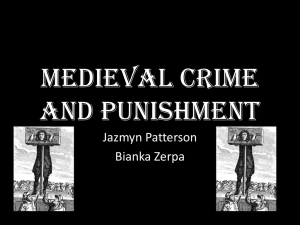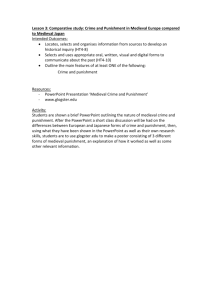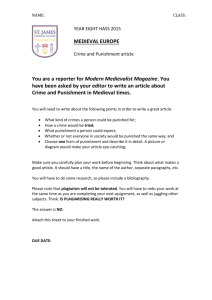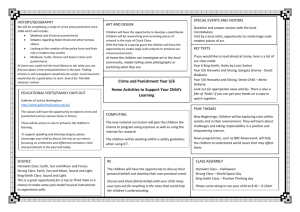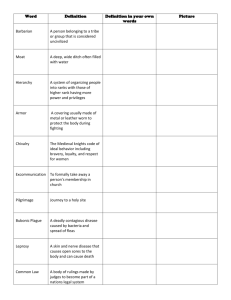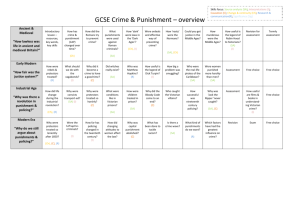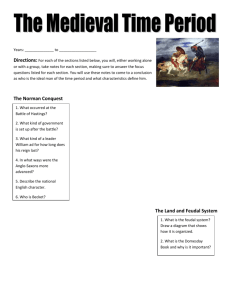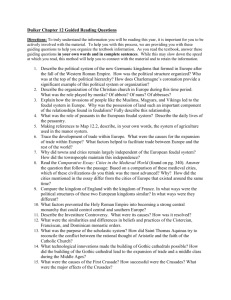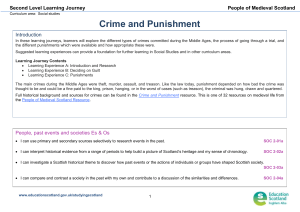Year 8 History Term 1
advertisement
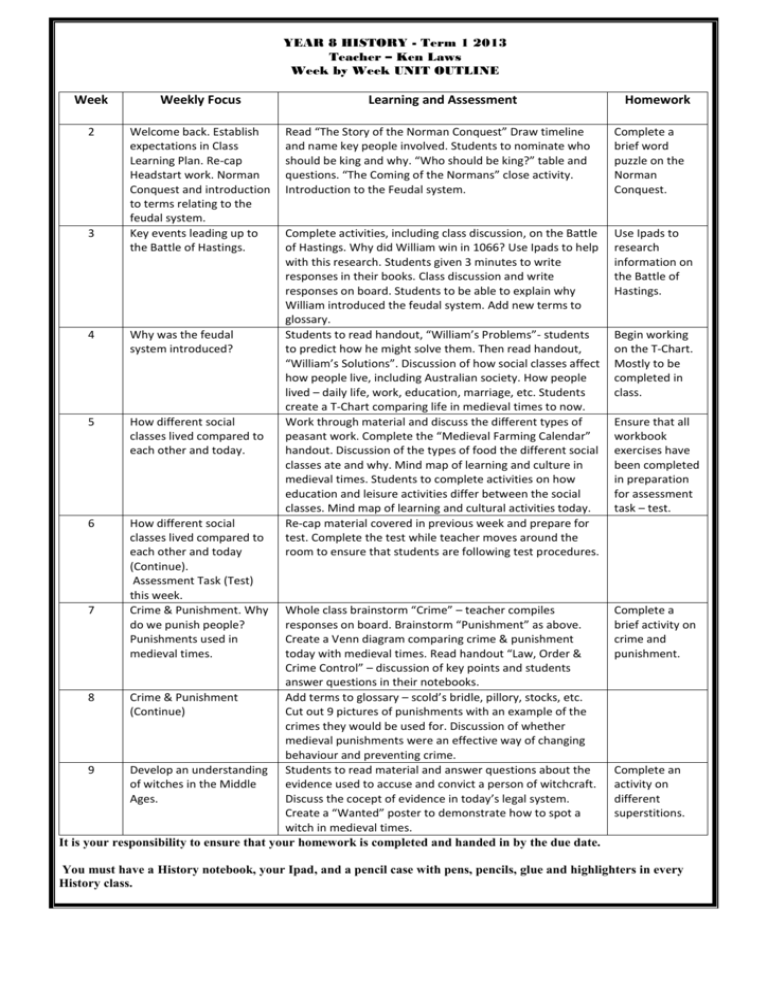
YEAR 8 HISTORY - Term 1 2013 Teacher – Ken Laws Week by Week UNIT OUTLINE Week Weekly Focus 2 Welcome back. Establish expectations in Class Learning Plan. Re-cap Headstart work. Norman Conquest and introduction to terms relating to the feudal system. Key events leading up to the Battle of Hastings. Learning and Assessment Homework Read “The Story of the Norman Conquest” Draw timeline and name key people involved. Students to nominate who should be king and why. “Who should be king?” table and questions. “The Coming of the Normans” close activity. Introduction to the Feudal system. Complete a brief word puzzle on the Norman Conquest. Complete activities, including class discussion, on the Battle of Hastings. Why did William win in 1066? Use Ipads to help with this research. Students given 3 minutes to write responses in their books. Class discussion and write responses on board. Students to be able to explain why William introduced the feudal system. Add new terms to glossary. Students to read handout, “William’s Problems”- students to predict how he might solve them. Then read handout, “William’s Solutions”. Discussion of how social classes affect how people live, including Australian society. How people lived – daily life, work, education, marriage, etc. Students create a T-Chart comparing life in medieval times to now. Work through material and discuss the different types of peasant work. Complete the “Medieval Farming Calendar” handout. Discussion of the types of food the different social classes ate and why. Mind map of learning and culture in medieval times. Students to complete activities on how education and leisure activities differ between the social classes. Mind map of learning and cultural activities today. Re-cap material covered in previous week and prepare for test. Complete the test while teacher moves around the room to ensure that students are following test procedures. Use Ipads to research information on the Battle of Hastings. Whole class brainstorm “Crime” – teacher compiles responses on board. Brainstorm “Punishment” as above. Create a Venn diagram comparing crime & punishment today with medieval times. Read handout “Law, Order & Crime Control” – discussion of key points and students answer questions in their notebooks. 8 Crime & Punishment Add terms to glossary – scold’s bridle, pillory, stocks, etc. (Continue) Cut out 9 pictures of punishments with an example of the crimes they would be used for. Discussion of whether medieval punishments were an effective way of changing behaviour and preventing crime. 9 Develop an understanding Students to read material and answer questions about the of witches in the Middle evidence used to accuse and convict a person of witchcraft. Ages. Discuss the cocept of evidence in today’s legal system. Create a “Wanted” poster to demonstrate how to spot a witch in medieval times. It is your responsibility to ensure that your homework is completed and handed in by the due date. Complete a brief activity on crime and punishment. 3 4 Why was the feudal system introduced? 5 How different social classes lived compared to each other and today. 6 How different social classes lived compared to each other and today (Continue). Assessment Task (Test) this week. Crime & Punishment. Why do we punish people? Punishments used in medieval times. 7 Begin working on the T-Chart. Mostly to be completed in class. Ensure that all workbook exercises have been completed in preparation for assessment task – test. Complete an activity on different superstitions. You must have a History notebook, your Ipad, and a pencil case with pens, pencils, glue and highlighters in every History class.
